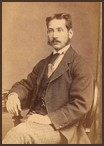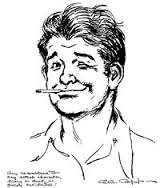
(London, 1828–2 April 1867) was a prolific Victorian illustrator who pioneered techniques in comic illustration. He wrote illustrated stories and illustrated many children’s books including his own version of Aesop’s Fables “translated into Human Nature”. His work also appeared in Punch and other comic magazines and newspapers. He died in poverty at the age of 37. A benefit given at London’s Adelphi Theatre for his widow and children shortly after his death was the occasion for the first public performance of Cox and Box.
In 1868 The Illustrated Pilgrim’s Progress was re-published with Charles Bennett as the illustrator. Charles Kingsley wrote a lengthy preface to the first edition in 1860, adding a second in 1868 commending the work of his friend, Charles Bennett who had died one year earlier.
BIBLIOGRAPHY:
Papernose Woodensconce. 1854
The Fables of Aesop and Others, Translated into Human Nature. W. Kent & Co., 1857.
The Faithless Parrot, Routledge, 1858.
The sad history of Greedy Jem and all his little brothers, 1858.
The Nine Lives of a Cat, Griffith and Farran, 1860
Mr. Wind and Madame Rain, 1864.
“Hair-Dressing by Electricity”. Punch, 1866.
The origin of species, dedicated by natural selection to Dr. Charles Darwin (caricatures series, included in Character Sketches and Development Drawings, 1872)
Aesop’s Fables and Others, Designed and Drawn on Wood by Charles H. Bennett, with Additional Fables Designed and Drawn by Randolph Caldecott. London: Bracken Books, 1986.
(wikipedia.org)

 RSS Feed
RSS Feed


